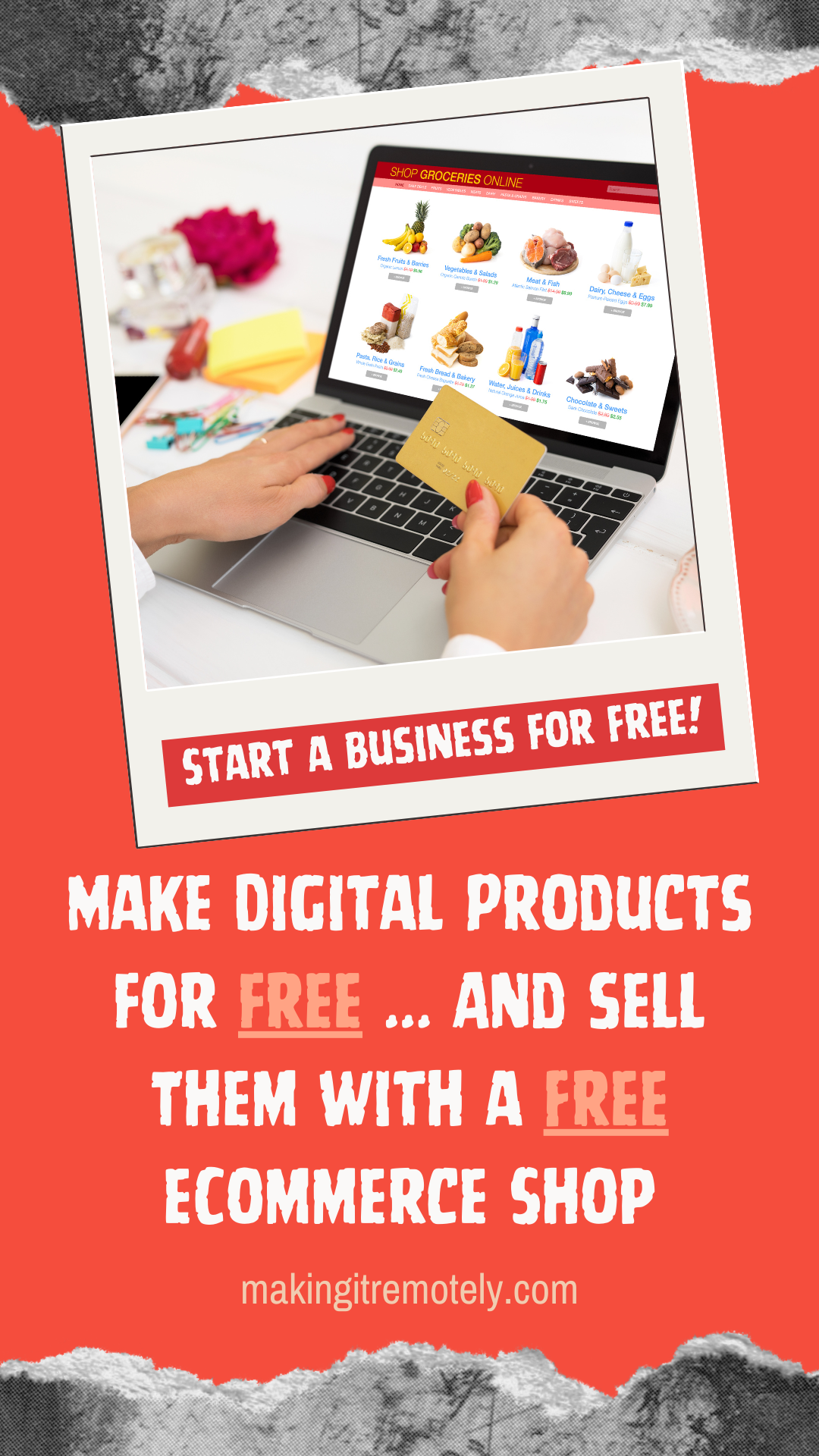Are you a small business owner looking to expand your reach and increase sales? Discover how you can easily start a new business for free by creating and selling digital products and adding free eCommerce functionality to your blog!
This is an article that will walk you through the idea of building a business at the lowest possible price. There is never going to be a business that you can start for totally free, but the combination of digital products and a free eCommerce platform is the best way to get a business online for free.
How to Make Digital Products for Free
A digital product is any product you sell online that doesn’t have a physical form or substance. Digital products are intangible items delivered electronically, downloaded and used digitally. And they can be created for free.
Selling digital products has become more popular in recent years as a business model. If you have any creative skills – in writing, design, music, video, computers, coding, education, or any other field – you can make digital products for free. There is nothing stopping you!
There is also a free, open source WordPress eCommerce plugin that makes it easy to add a store to an existing blog or website.
You can also use your eCommerce store to sell collections of items like affiliate products, print on demand, wholesale products, services and more.
When you think of the combination of digital products and eCommerce, you can build a thriving online business for free and the sky is the limit.
The Area of Focus for This Article
This article will focus on building a successful WooCommerce shop. However, before you can earn from an eCommerce shop you will need to get started making free digital products or selling affiliate products (there is no charge to sell these either) or if you're interested in selling physical products, check out an article on getting started with print on demand.
Once you have products to sell let's get started with a list of items you'll need to set up your shop.
Domain Name and Web Hosting: You may already have a domain and hosting if you’ve set up a WordPress blog. If not, choose a memorable, keyword enhanced and relevant domain name for your website. We use Bluehost for our site.
Set up Your WooCommerce Shop
- SSL Certificate: Ensure your website has an SSL certificate for secure data transmission.
- WordPress: Install WordPress a free open source solution as your content management system (CMS).
- Your Contact Information: Provide clear contact details for customer inquiries.
Domain Name and Web Hosting: You may already have a domain and hosting if you’ve set up a WordPress blog. If not, choose a memorable, keyword enhanced and relevant domain name for your website. We use Bluehost for our site.
Affiliate Disclaimer: This page may contain affiliate links. If you use these links to make a purchase, I will receive a small commission. However, using these links will have no effect on you or your purchase in any way. For more information refer to our disclaimer page.
- Refund Policy: You need to clearly state your refund policy in your shop even if you don’t accept refunds. A good rule of thumb is to place your terms of service, refund policy, privacy policy in the footer of your shop. That will make it easily visible on all pages.
- Crafting Your Brand: Choose elements that reflect your personal creativity in the website's design, logo, colors, fonts and overall branding.
- A WordPress Theme: Choose a WordPress theme that's suitable for both a blog and an e-commerce shop. There are many themes designed for WooCommerce compatibility. We use Thrive Suite because it has an integration with WooCommerce.
- Blog Categories: Organize your blog content into keyword enhanced categories for easy navigation. Use a tool like Ubersuggest to research the keywords people in your niche will use when searching for products and services like yours and use 5-10 of these keywords as your blog categories.
- Responsive Design: Ensure your website is responsive and looks good on various sized screens and devices. Thrive Suite (the theme we use) is a responsive theme builder.
- WooCommerce Plugin: Install and set up the WooCommerce plugin to add e-commerce functionality to your website.
- Shopping Cart: WooCommerce has a shopping cart included. Set up your WooCommerce shopping cart system that allows users to add products, review them, and proceed to checkout.
- Payment Gateway: Integrate a secure payment gateway to process payment transactions. WooCommerce supports several payment options. We use Stripe (Google Pay, Apple Pay, Mastercard, Visa, Discover), and Paypal
- Privacy Policy and Terms of Service: Create these legal pages to protect your business and customers and place links in the footer of your shop.
- Legal Compliance: Make sure your website complies with legal requirements, including GDPR for user data.
Recommended Resources
Themes and Site Builders
Here is a list of the WordPress site builders we recommend.
Email Marketing Providers
Email marketing is a critical business building function. Here are our recommended resources.
Payment Processors
Don't have a shop? Create links that will enable you to get paid.

Items You Can Set up After WooCommerce is Installed
Product Listings: Add your products to the WooCommerce shop, including detailed descriptions, images, and pricing.
Content: Create quality content for your blog, including articles, images, and videos that are helpful for potential customers who are looking for the products in your shop. Include a call to action that leads to a page where a purchase can be made. You also want to create content and keywords that will resonate with your target audience.
Backups: Set up regular backups of your website to prevent data loss.
Support and Maintenance: Plan for ongoing support and maintenance to keep your website up-to-date and functional.
Social Media Integration: Link your social media profiles to your website for increased visibility.
Search Engine Optimization (SEO): Optimize your website for search engines to improve your online visibility.
Analytics: Install analytics tools like Google Analytics to track user behavior and website performance.
Security: Implement security measures to protect your website from potential threats.
Mailing List Integration: Consider adding an email marketing platform and integrating it with your website.
That's it! You've successfully installed WooCommerce on your WordPress website. You can now start adding products, customizing your store's design, and begin selling online.
Build a Conversion Focused Website with Bluehost!
Starting at $2.75 per month. For a limited time, FREE 1 Year domain registration on shared annual plans and FREE SSL certificate.


